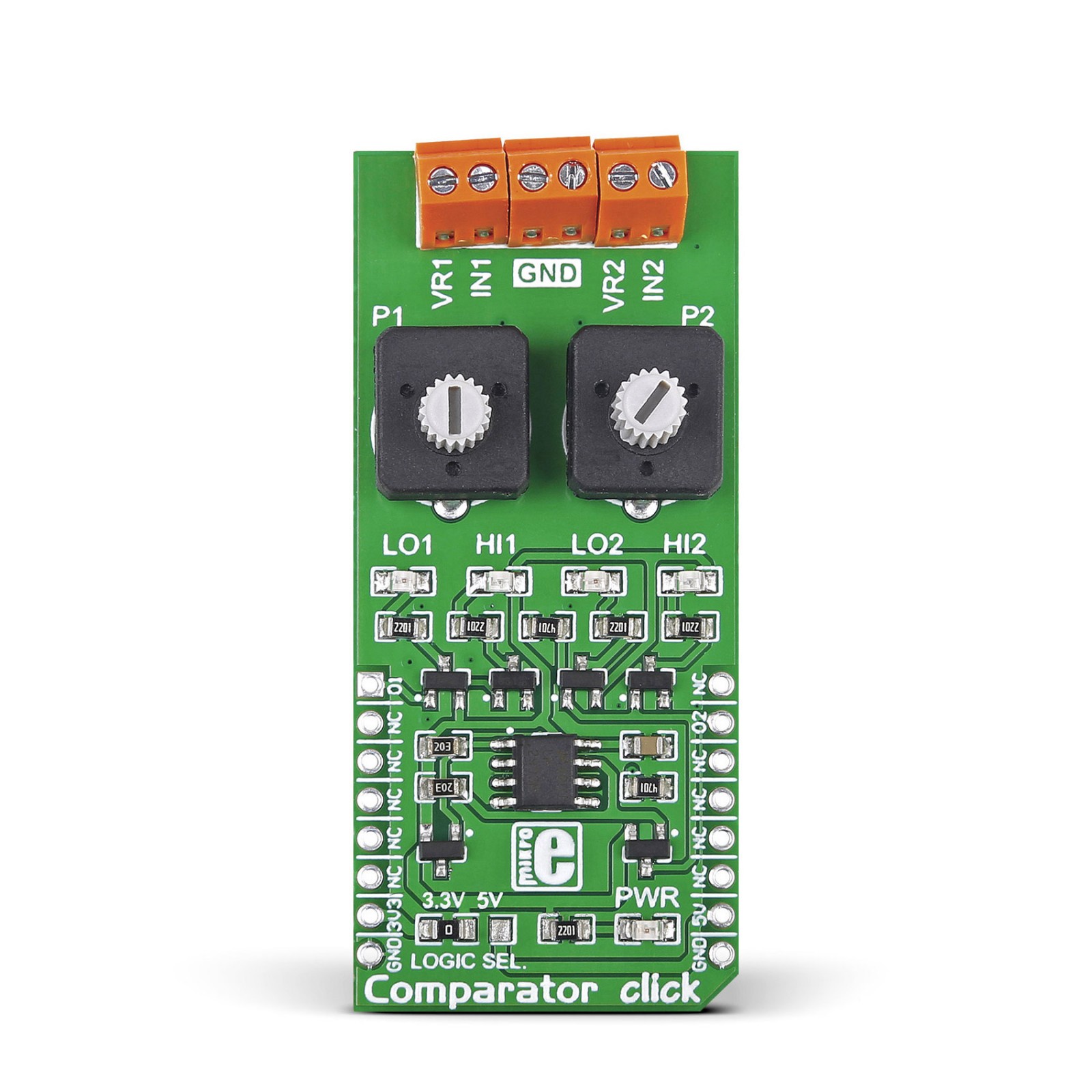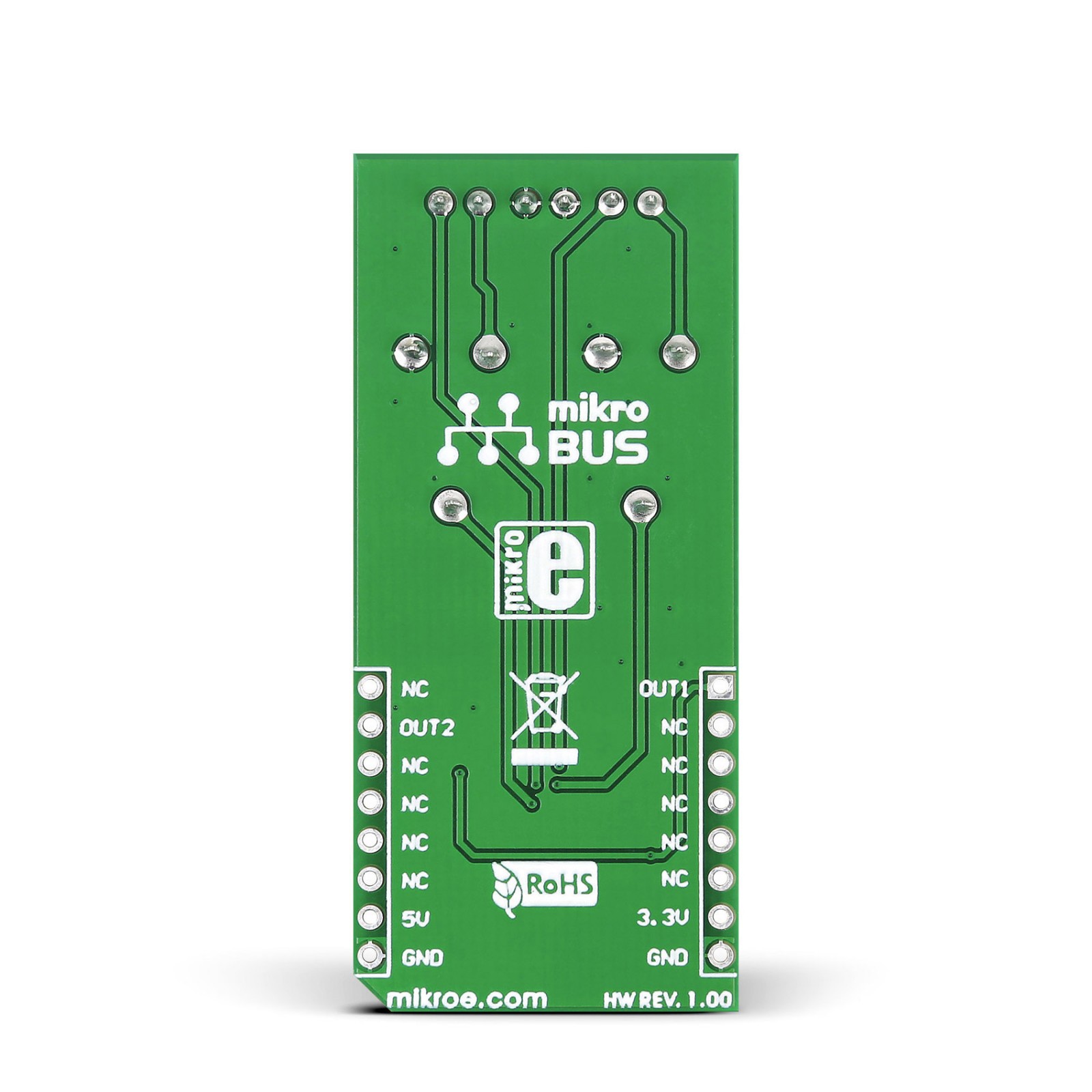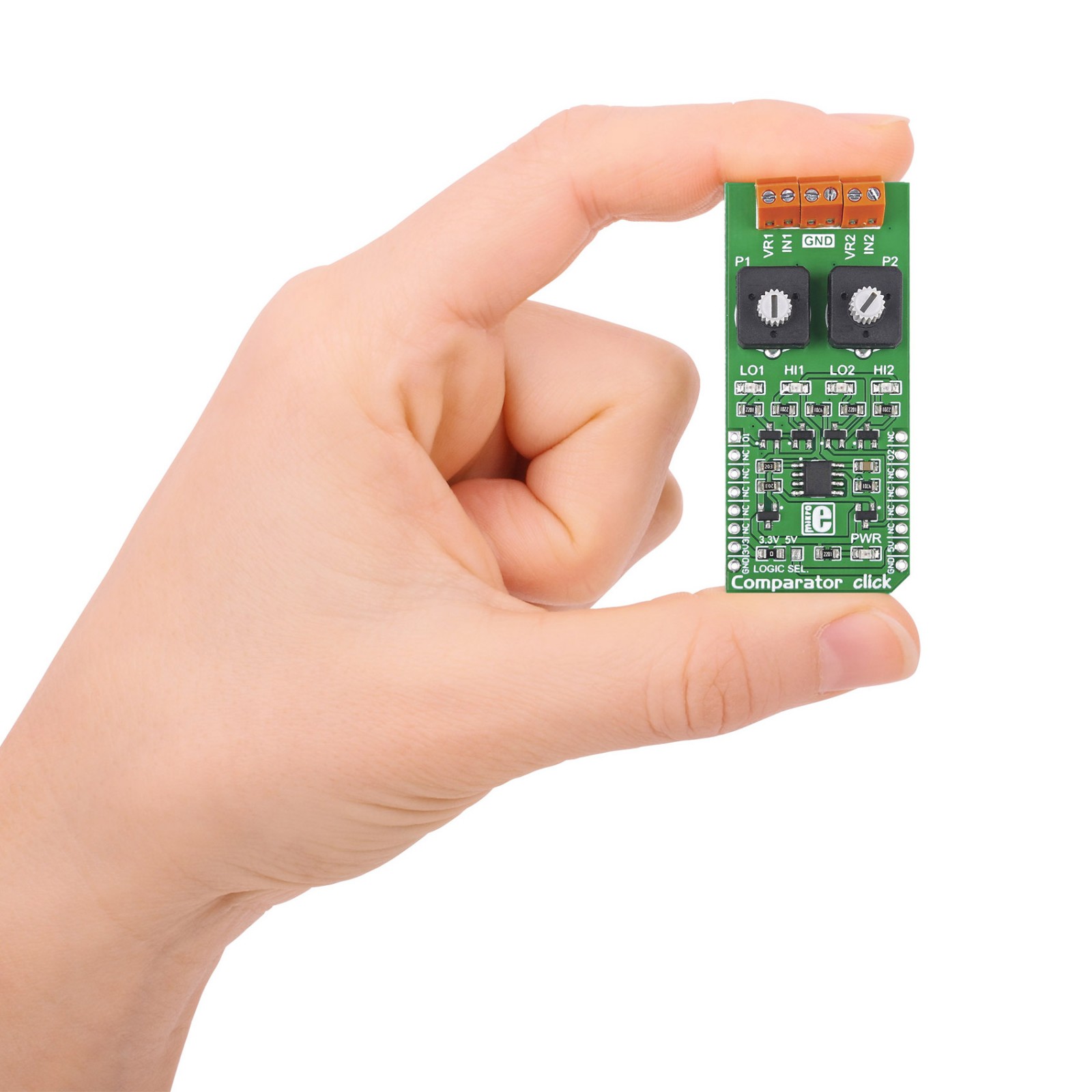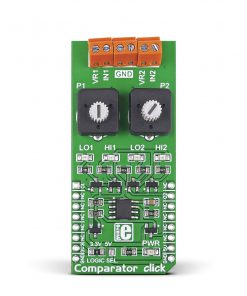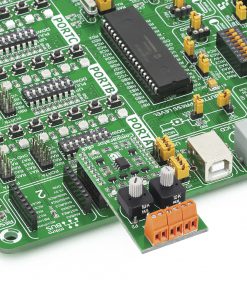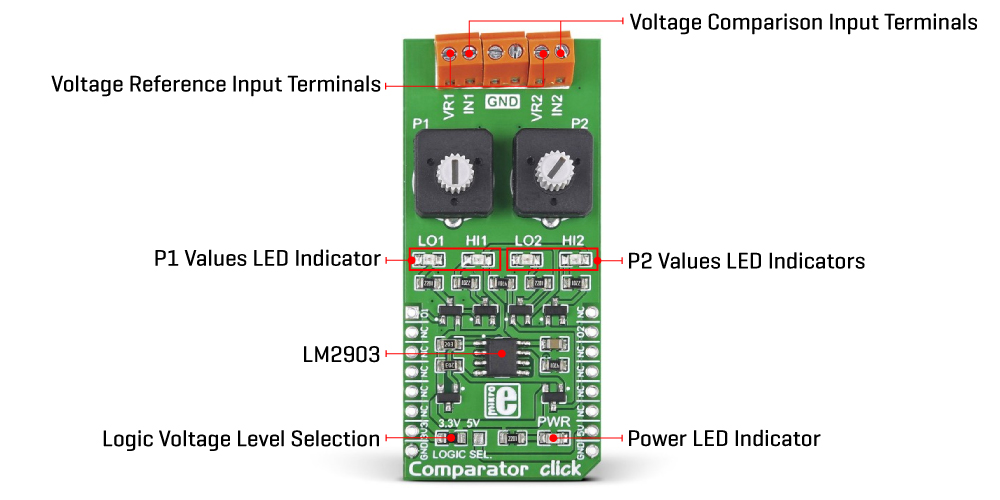Subtotal: R1,030.00
Comparator Click
R260.00 ex. VAT
Comparator Click is a compact add-on board that contains two independent precision voltage comparators. This board features the LM2903, a dual differential comparator from onsemi. It provides two pair of screw terminals that allows you to connect separate inputs with additional ground connections, which let you use either a single (range of 2 to 36VDC) or dual power supply (from ±1 to ±18VDC). Two potentiometers are here to set threshold values for comparison. This Click board™ makes the perfect solution for A/D converters, wide-range VCOs, MOS clock generators, and more.
Comparator Click is supported by a mikroSDK compliant library, which includes functions that simplify software development. This Click board™ comes as a fully tested product, ready to be used on a system equipped with the mikroBUS™ socket.
Stock: Lead-time applicable.
| 5+ | R247.00 |
| 10+ | R234.00 |
| 15+ | R221.00 |
| 20+ | R212.68 |

 MPU 9DOF Click
MPU 9DOF Click  4-20mA R Click
4-20mA R Click 